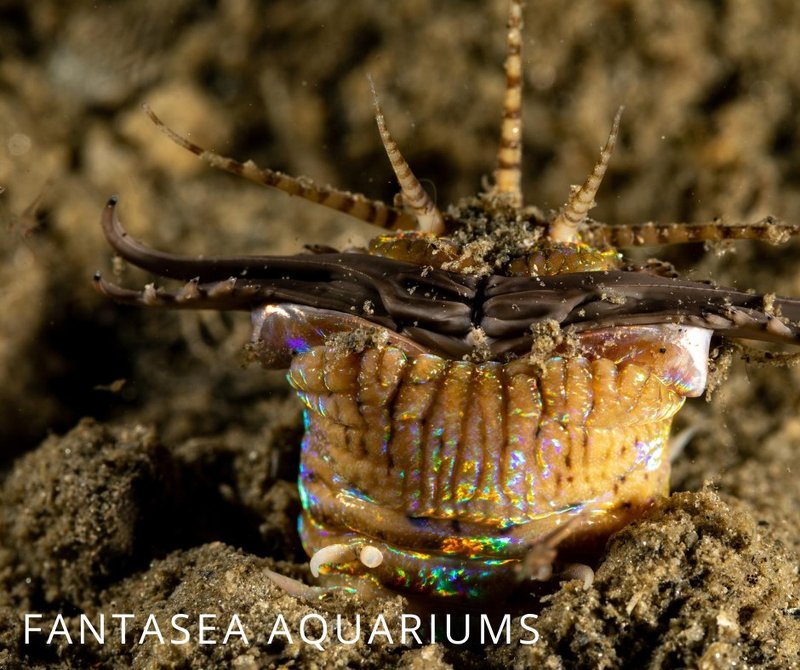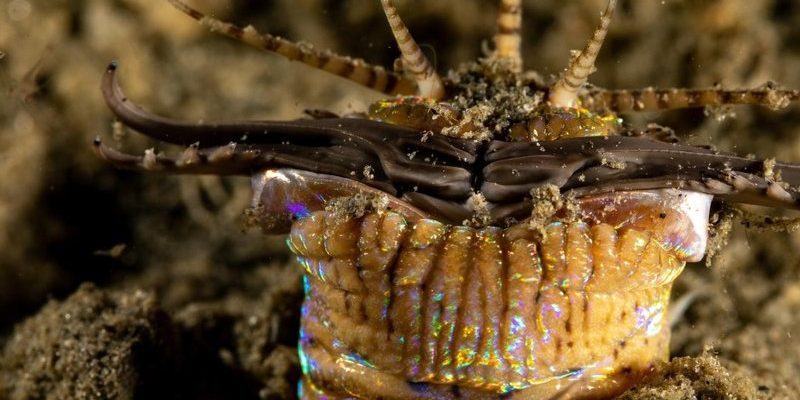
Understanding Bobbit Worms and Their Habitats
Before we jump into aquascaping strategies, it’s essential to know what we’re dealing with. Bobbit worms, or *Eunice aphroditois*, can grow quite large—up to 10 feet in length! While they sound fascinating, they also come with some serious downsides. These worms prefer soft, sandy substrates where they can burrow. They’re nocturnal hunters, emerging at night to snag unsuspecting fish and invertebrates.
The reason they can be so disruptive in your aquarium is their ability to remain hidden. They’ll wait motionless, blending in with the substrate until their next meal swims by. Hence, creating an environment that doesn’t support their lifestyle is crucial.
To minimize the chance of a Bobbit worm taking up residence, consider the substrate you’re using. A well-drained, rocky substrate can deter them from burrowing. Understanding where these worms thrive will help you design an environment that promotes the health of your aquatic life instead.
The Importance of Substrate Choice
Let’s talk about substrate. Choosing the right one is the first defense against unwanted guests like Bobbit worms. If you’re using fine sand, you might as well be putting out a welcome mat. Instead, opt for a coarser substrate, such as gravel or larger stones, to make it harder for these worms to burrow.
When selecting your substrate, consider materials such as:
- Gravel: Offers good drainage and can be an uninviting home for Bobbit worms.
- Large rocks: Not only add visual interest, but also prevent the worms from finding cozy places to hide.
- Environmental substrates: Products designed specifically for aquascaping often include larger particles that deter burrowing.
Aside from avoiding sand, mixing in some plant substrate can also help. Plants not only improve water quality but create a more complex environment that isn’t conducive to worm habitation.
Incorporating Hardscape Elements
Now that we’ve covered substrate, let’s discuss hardscape elements like rocks, driftwood, and decorations. These additions not only beautify your aquarium but also serve as barriers against Bobbit worms. Think of these elements as a fortress around your precious aquatic life.
When placing hardscape in your tank, strategically layer them to create hiding spots for fish but limit the open spaces where worms can burrow. Materials to consider include:
- Rocks: Flat or jagged rocks can cover areas where worms might want to dig.
- Driftwood: This can create natural barriers and adds a rustic aesthetic.
- Coral pieces: If it fits your setup, these provide a beautiful yet inhospitable environment for Bobbit worms.
As you arrange your hardscape, let your creativity flow! The goal is to create an environment that’s not only welcoming to your fish but unwelcoming to these pesky invaders.
Choosing Compatible Plants
Plants play a vital role in your aquarium’s ecosystem. Not only do they provide oxygen, but they also help in creating an uninviting space for Bobbit worms. Opting for dense-rooted plants can create more competition for space, discouraging the worms from settling down.
Here are some plants to consider:
- Java Fern: This hardy plant thrives in various conditions and grows roots that make it difficult for worms to settle.
- Anubias: With its thick leaves, it creates a beautiful barrier against burrowing creatures.
- Cryptocoryne: Known for its diverse leaf shapes, this plant can fill your tank while hindering worm habitat creation.
When designing your plant layout, place the larger plants toward the back and sides of the tank. This will not only create depth in your aquascape but also make it harder for worms to find a suitable living space.
Regular Maintenance and Monitoring
Creating an unwelcoming environment isn’t just about initial setup. Regular maintenance and monitoring are key to a thriving aquarium. Keep a close eye on your substrate, hardscape, and plant health. If you notice any sandy areas starting to form, it may be conducive to Bobbit worm habitation.
Cleaning and changing your substrate periodically can help, too. Here are some tips for maintaining a Bobbit worm-free aquarium:
- Vacuum the substrate: This removes waste and prevents sand accumulation.
- Inspect new plants and rocks: Before adding them to your tank, ensure they’re free of any hidden worms.
- Watch for signs: If you notice sudden decreases in your fish population, it might be worth investigating the possibility of Bobbit worms.
Maintaining your aquascape can feel like a chore, but think of it as caring for a pet. The healthier the environment, the happier your aquatic life!
To sum it all up, creating an aquarium that doesn’t invite Bobbit worms is all about thoughtful planning and execution. By carefully choosing your substrate, using strategic hardscape elements, selecting the right plants, and committing to regular maintenance, you can enjoy a vibrant underwater world without the worries of these sneaky invaders.
Remember, aquascaping is an art, and every choice you make contributes to the overall health of your aquarium. So grab your tools and start crafting that Bobbit worm-free oasis. Happy aquascaping!

